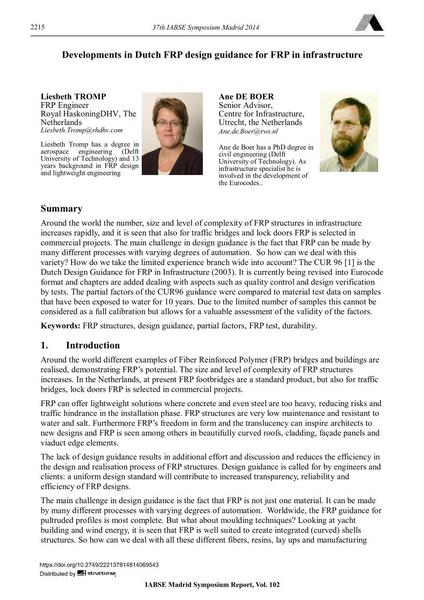Developments in Dutch FRP design guidance for FRP in infrastructure

|
|
|||||||||||
Détails bibliographiques
| Auteur(s): |
Liesbeth Tromp
Ane De Bore |
||||
|---|---|---|---|---|---|
| Médium: | papier de conférence | ||||
| Langue(s): | anglais | ||||
| Conférence: | IABSE Symposium: Engineering for Progress, Nature and People, Madrid, Spain, 3-5 September 2014 | ||||
| Publié dans: | IABSE Symposium Madrid 2014 | ||||
|
|||||
| Page(s): | 2215-2222 | ||||
| Nombre total de pages (du PDF): | 8 | ||||
| Année: | 2014 | ||||
| DOI: | 10.2749/222137814814069543 | ||||
| Abstrait: |
Around the world the number, size and level of complexity of FRP structures in infrastructure increases rapidly, and it is seen that also for traffic bridges and lock doors FRP is selected in commercial projects. The main challenge in design guidance is the fact that FRP can be made by many different processes with varying degrees of automation. So how can we deal with this variety? How do we take the limited experience branch wide into account? The CUR 96 [1] is the Dutch Design Guidance for FRP in Infrastructure (2003). It is currently being revised into Eurocode format and chapters are added dealing with aspects such as quality control and design verification by tests. The partial factors of the CUR96 guidance were compared to material test data on samples that have been exposed to water for 10 years. Due to the limited number of samples this cannot be considered as a full calibration but allows for a valuable assessment of the validity of the factors. |
||||
